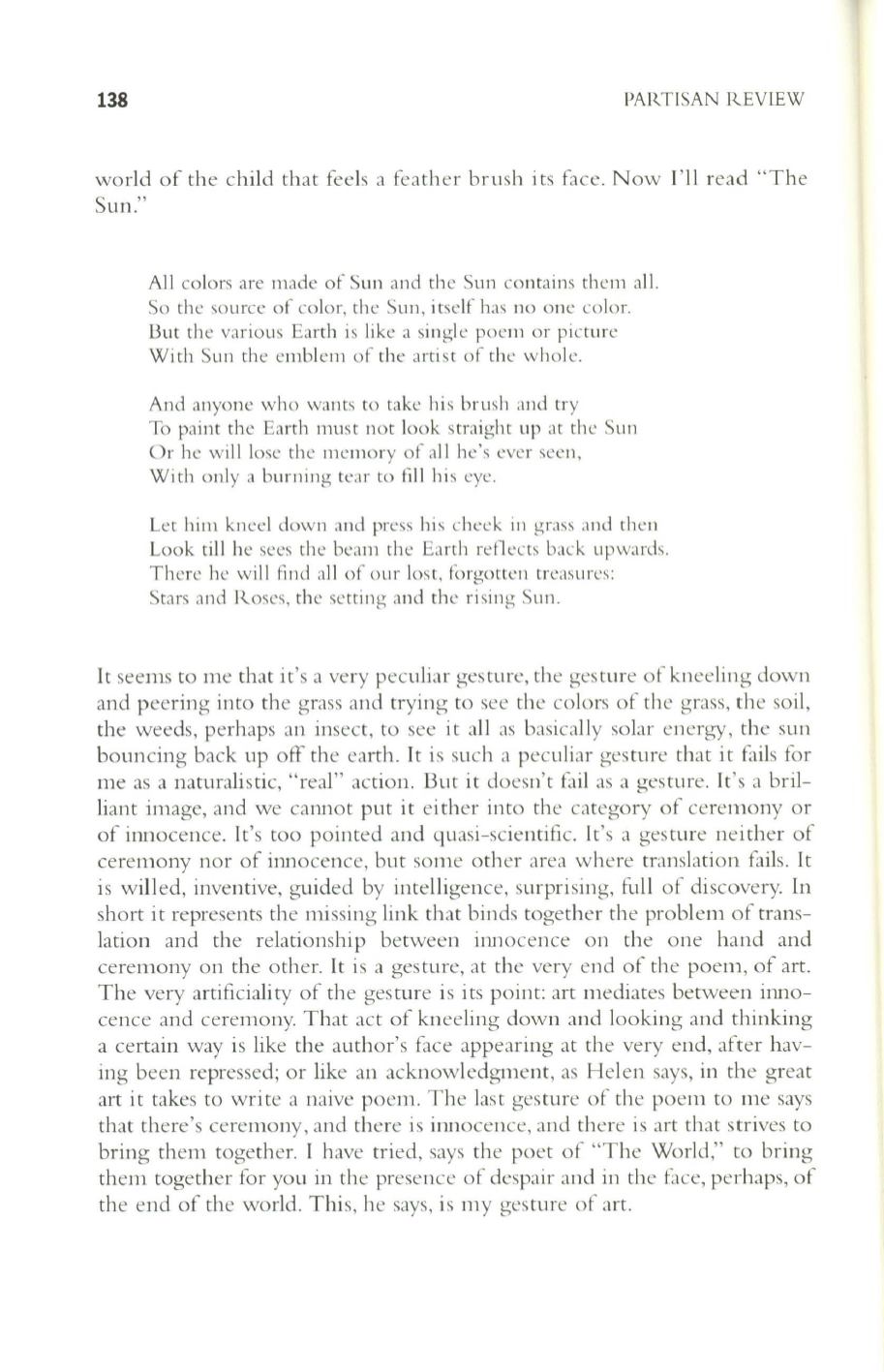
138
PAIU ISAN R EVI EW
world of the child th at fee ls a fea th er brush its face. Now I'll rea d "The
Sun."
All colo rs are m ade o f Sun and th e Sun contain s th em all.
So the so urce of colo r, th e Sun , itself has n o o n e co lo r.
But th e va rio us Earth is like a sin gle poem o r pi cture
With Sun the embl em o f th e artist of th e w ho le.
And anyone w ho wan ts
to
take hi s brush an d try
To paint th e Ea rth mu st no t look straigh t up at th e Sun
O r he w ill lose the m em o ry of all he's eve r see n ,
With o nly a burning tea r
to
fill hi s eye.
Let hi m kneel down and press hi s check in g rass and th en
Look till h e sees th e beam the Ea rth refl ects bac k upwa rds.
T h ere he
wil
I fin d all of o ur lost, fo rgotte n treasures:
Stars and R oses, the settin g and th e r ising Sun.
It seems to me that it's a very peculiar ges ture, the ges ture of kneeli ng down
and peering into the grass and trying
to
see the colo rs of th e grass, the soil ,
the weeds, perhaps an insec t, to see it all as basica ll y solar energy, the sun
bouncing bac k up off the earth . It is such a peculi ar ges ture that it fa ils fo r
me as a naturali sti c, " real " acti on. But it doesn't fa il as a ges ture. It's a bril–
liant image, and we canno t put it eith er in to th e category o f ceremony o r
of innocence. It's too pointed and quasi-scienti fic. It's a ges ture neither of
ceremony no r of inn ocence, but some o ther area where translati on fails. It
is will ed, inventive, guided by intelli gence, surpri sing, full o f di scovery. In
sho rt it represents the mi ssing link that binds together the probl em o f trans–
lation and the relati onship between inn ocence on th e one hand and
ceremony on the o ther. It is a ges ture, at the very end o f the poem , of art.
The very artificiali ty of the ges ture is its point: art medi ates between inno–
cence and ceremony. That act of kn ee ling down and looking and thinking
a certain way is like the autho r's face appea ring at the very end , after hav–
ing been repressed; or like an acknowledgment, as Helen says, in the great
art it takes to write a naive poem . Th e las t ges ture o f the poem
to
me says
that there's ce remony, and there is innocence, and there is art that strives to
bring them together. I have tri ed, says the poet of "The Wo rld ," to bring
them together for you in the presence of despair and in the face, perhaps, of
the end of the world . T hi s, he says, is Illy ges ture of art.


